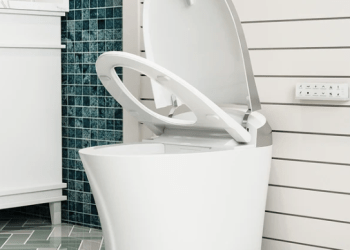As people age, their mobility may decrease, affecting their ability to perform daily tasks. One solution to this problem is using a walker designed to help seniors move around more efficiently and sustainably. In this article, we will discuss the benefits of using a walker and how it can improve the quality of life for seniors.
At 1truehealth.com, we offer a variety of senior walkers to browse and compare different models. We provide detailed descriptions of each option along with a customer support team available 24/7 who can answer any questions you may have. Visit us today to find the right walker for you or your loved one! Call now for more information!
What Is A Walker?
A walker is a mobility aid device that consists of a metal frame with four legs and handles on top. It provides support and stability to seniors who may have trouble walking independently. Walkers come in different sizes, styles, and colors and can be adjusted to fit the user’s height and weight.
Benefits Of Using A Walker
Using a walker can have numerous benefits for seniors, including:
Increased Stability: A walker provides seniors more stability and balance, reducing the risk of falls and injuries.
Improved Mobility: Seniors can move around more freely and independently with the help of a walker, allowing them to perform daily tasks efficiently.
Reduced Fatigue: Walking with a walker can be less tiring than walking without one, as the user can rely on the device for support.
Increased Confidence: Using a walker can boost seniors’ confidence and self-esteem, as they can move around more quickly and less fear of falling.
Social Interaction: Seniors who use walkers may feel more comfortable and confident participating in social activities, leading to improved mental health and well-being.
Types Of Walkers
There are several types of walkers available on the market, including:
Standard Walkers: These are the most basic type of walker, with four legs and no wheels. They provide the most stable but require more effort to move around.
Wheeled Walkers: These walkers have two wheels on the front legs and two non-wheeled legs on the back. They are easier to move around but may provide less stability than standard walkers.
Rollators: Rollators are wheeled walkers with a seat and a basket, making them ideal for seniors who need to take breaks during walks or carry items.
Knee Walkers: Knee walkers are designed for seniors with an injury or surgery on one foot or ankle. They have a cushioned knee rest and three or four wheels.
How To Choose The Right Walker
Choosing the right walker depends on the user’s specific needs and preferences. Consider the following factors when selecting a walker:
Height And Weight: The walker should be adjustable to fit the user’s height and weight.
Stability: The user should choose a walker that provides enough stability to prevent falls and injuries.
Maneuverability: The user should choose a walker that is easy to maneuver and move around, based on their living environment and lifestyle.
Comfort: The walker should have comfortable handles and a cushioned seat if necessary.
In conclusion, using a walker can significantly improve seniors’ mobility and quality of life. It provides stability, independence, and confidence, allowing seniors to perform daily tasks and participate in social activities efficiently. Different types of walkers are available, and choosing the right one depends on the user’s specific needs and preferences. If you or a loved one is struggling with mobility, consider getting a walker and enjoy its many benefits.













